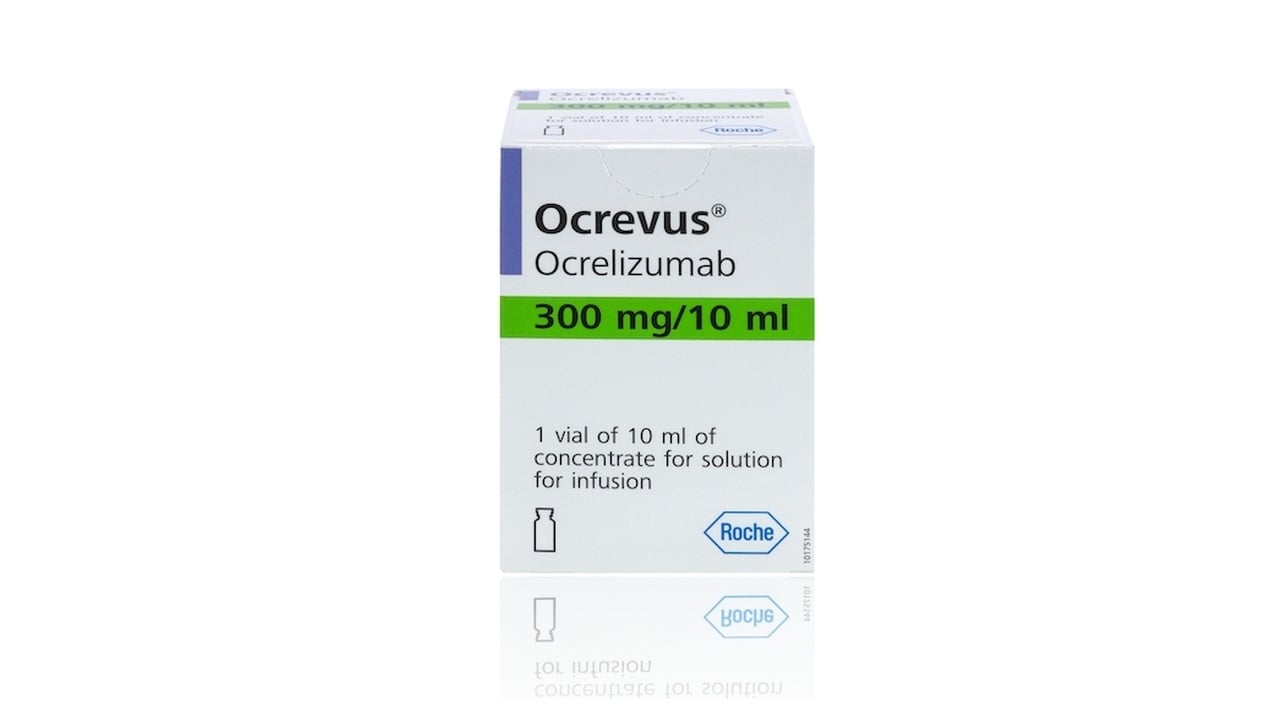Roche touts near-complete suppression of multiple sclerosis relapse for injectable Ocrevus
2024-04-17
临床结果临床3期

Preview
来源: FiercePharma
The FDA and the European Medicines Agency are expected to deliver a decision on Roche's subcutaneous Ocrevus in September and mid-2024, respectively.
One-year data continued to support a more convenient, injectable version of Roche’s blockbuster multiple sclerosis (MS) drug Ocrevus ahead of an FDA decision, the Swiss pharma said.
A subcutaneous formulation of Ocrevus helped 97% of MS patients achieve no relapse up to 48 weeks of treatment, according to updated data from the phase 3 OCARINA II study presented at the American Academy of Neurology (AAN) annual meeting.
Besides lowering the annual relapse rate to an estimated 0.04, subcutaneous Ocrevus also suppressed brain lesions as shown on MRI imaging by 97%. Most patients had no T1 gadolinium-enhancing lesions or worsening T2 lesions, which are markers of active inflammation and burden of disease, respectively.
With the under-the-skin version, Roche’s proposal is a more convenient injection that requires only 10 minutes to administer, compared with about two and a half hours—or up to four hours in some patients experiencing side effects—for the currently available intravenous infusion. The subcutaneous formulation requires more drug, at 920 mg per dosing, versus 600 mg for an infusion.
Roche has already filed subcutaneous Ocrevus with the FDA and the European Medicines Agency based on 12-week data from the OCARINA II trial showing it matched up to the original infusion in terms of total and peak systemic exposure to the drug in patients with relapsing or primary progressive MS.
The two formulations previously also demonstrated similar depletion of B cells sustained over 24 weeks. Ocrevus is designed to target CD20-positive B cells, which are responsible for inflammatory damage to nerve cells in MS. Because the IV patients were later converted to SC, no 48-week comparison data between the two versions are available.
Roche developed the subcutaneous version with Halozyme Therapeutics’ ENHANZE drug delivery technology, which uses an enzyme to allow large molecules like Ocrevus to be given under the skin.
The drug is currently Roche’s top seller, with 2023 sales reaching 6.38 billion Swiss francs ($7 billion), good for 13% growth over 2022 at constant exchange rates. The CD20 antibody holds about 24% MS patient share across the U.S. and EU5 countries.
The star MS med is facing some competition from Novartis’ rival anti-CD20 molecule, Kesimpta, which comes as a subcutaneous injection. Kesimpta doubled sales in 2023 to $2.17 billion. The drug has secured new-to-brand share leadership in seven of the 10 major markets outside of the U.S., according to Novartis’ report in January.
At the AAN conference, longer-term results from the ALITHIOS open-label extension study showed sustained efficacy for Kesimpta in recently diagnosed patients with relapsing MS. Treatment-naïve patients who went directly to Kesimpta had 44% fewer relapses compared with those who switched to it from Sanofi’s Aubagio.
During the extension study, the annual relapse rate for Kesimpta as a first-line treatment dropped further to 0.05 from 0.104 in the original phase 3 trials. The high proportion of patients with no evidence of disease activity was maintained up to six years, investigators reported at AAN.
更多内容,请访问原始网站
文中所述内容并不反映新药情报库及其所属公司任何意见及观点,如有版权侵扰或错误之处,请及时联系我们,我们会在24小时内配合处理。
靶点
热门报告
立即开始免费试用!
智慧芽新药情报库是智慧芽专为生命科学人士构建的基于AI的创新药情报平台,助您全方位提升您的研发与决策效率。
立即开始数据试用!
智慧芽新药库数据也通过智慧芽数据服务平台,以API或者数据包形式对外开放,助您更加充分利用智慧芽新药情报信息。





